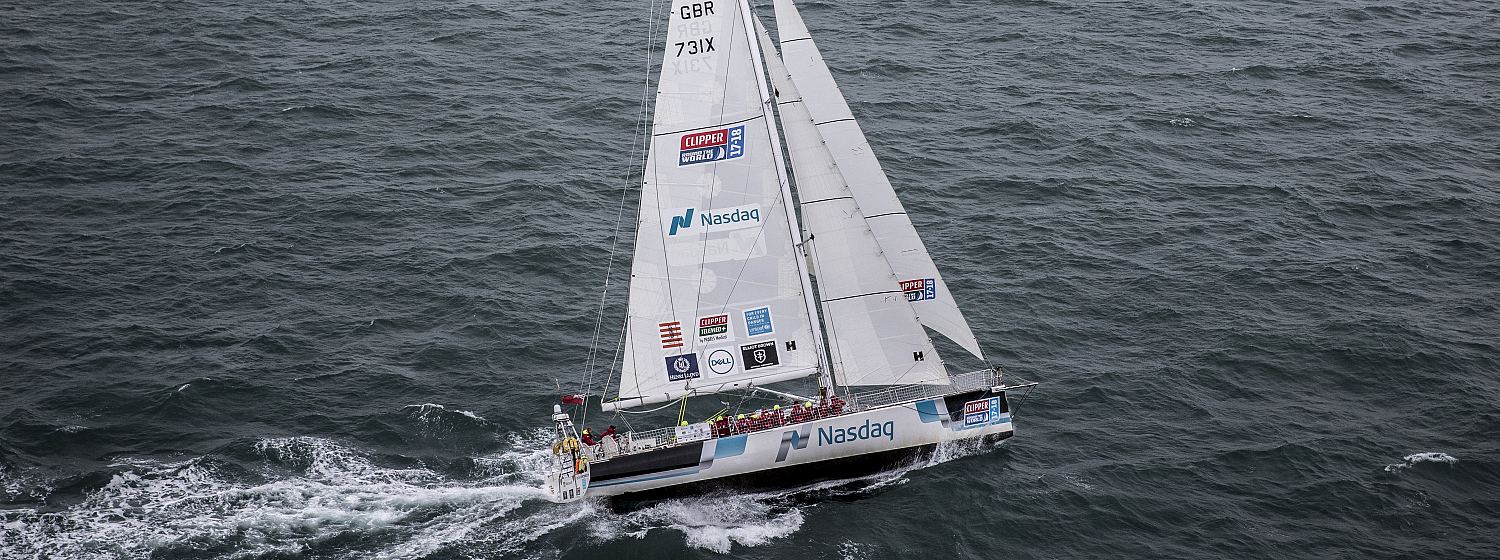Race 2 - Day 11
Crew Diary - Race 2 Day 11: Punta del Este to Cape Town
15 October
Back to Reports
View Team Page
It is 11 days into our leg to Cape Town and remarkably we are fighting with the pack and looking forward to an exciting last day or so of racing. You never know!
However if we are to shock everyone we need to upgrade our relations with the Spinnaker family. In an earlier blog I remember commenting relations were poor - and they have not improved. They have cast aside all our efforts to build a relationship and remain an unpleasant, unpredictable bunch that have the capacity to ruin your hour, watch day or Race on a whim. We are told by our leaders they are just like any other family and to be dealt with in the same way – we are not to fear them. Nonsense. Helming a spinnaker for 30 mins on a beautiful clear day in the South Atlantic is enough leave you so drained you have to have a lie down and large scale biscuit infusions. Dealing with them in the dark and in harsher conditions does not bear thinking about.
We have been fortunate with the new blood introduced in Punta. They have added to our whole and we in turn have been quick to integrate them. One of the new joiners, and I hope they do not mind being loosely quoted here, told me over a beer that he had joined many crews including Clipper Race crews in the past and always found it to be an interesting exercise. In our case, given our Leg 1 history he was prepared for the worst and delighted with what greeted him. If we can maintain that kind of spirit all things are possible.
Moving on, from my experience it is obvious that the companionway is one of the most dangerous places on the boat. Whether it is the excitement of the riches that lie below or the beauty of a fine watch on deck that entices people into losing concentration or whether it is simply just one of the more dangerous places to be, I don't know. The why does not matter – it is enough to know it is a place of danger.
So with that context, have you ever wondered how many ways there are to enter and exit the Clipper 70 companionway? Infinite of course but with cuddy shut and companionway roof closed there are four basic approaches evident and these are a testimony to the diversity of the Clipper crews.
There is that adopted by the young fit and agile and those of a certain age that are devotees of various philosophies that promote contortionism. At night these individuals exit the companionway in a blur of choreographed movement that can accommodate all sea and boat conditions and the infernal clutter of safety tethers. So good are this group their arrival is more commonly registered by the patter of feet on deck behind you rather than their actual presence.
The next group are those that have perfected a single technique. This works well in most conditions for visits down the companionway but can be upset by the positioning of people and tethers. To combat this, adherents to this approach can often be seen loitering at the back of the watch – delaying departure until conditions for their technique are met. Typically the technique involves a well-drilled approach and perfectly executed pirouette immediately adjacent to the companionway entrance – rather along the lines of a Fosbury flop but without the actual flop, you only need that skill to access certain bunks. These individuals also have too much physical capacity to struggle with exiting the companionway.
Group 3 can entertain in many ways. They can get in and out of the companionway but not with any comfort. Getting down can elicit significant grunting and groaning, plenty of colourful language and frequent use of individuals personal catchphrases. The most entertainment here can be the need to manhandle ones leg through the hatch. Inelegant and functional but to devotees of the art offering fine entertainment.
The most problematic are those in Group 4 that have simply given up especially with the entrance on deck. Their entrance usually involves the some form of flop onto deck. Rather like a seal on land. This is not recommended. There are numerous things on deck to flop onto that are unpleasantly hard or edgy, or indeed both, from which even glancing blows can be painful or it can simply be very wet. In all cases a far from ideal entrance to the day's watch. Leaving the deck is typically less problematic; they simply cheat and move the hatch. Very sensible too but issues of delay can be expected and cause unreasonable levels of concern among those affected. These individuals may also hang around at the back to avoid causing a blockage or find a way of getting off deck earlier.
I'll end with a thank you to the Mothers from Leg 1 and Leg 2 who have made such efforts to produce decent food from so little.

